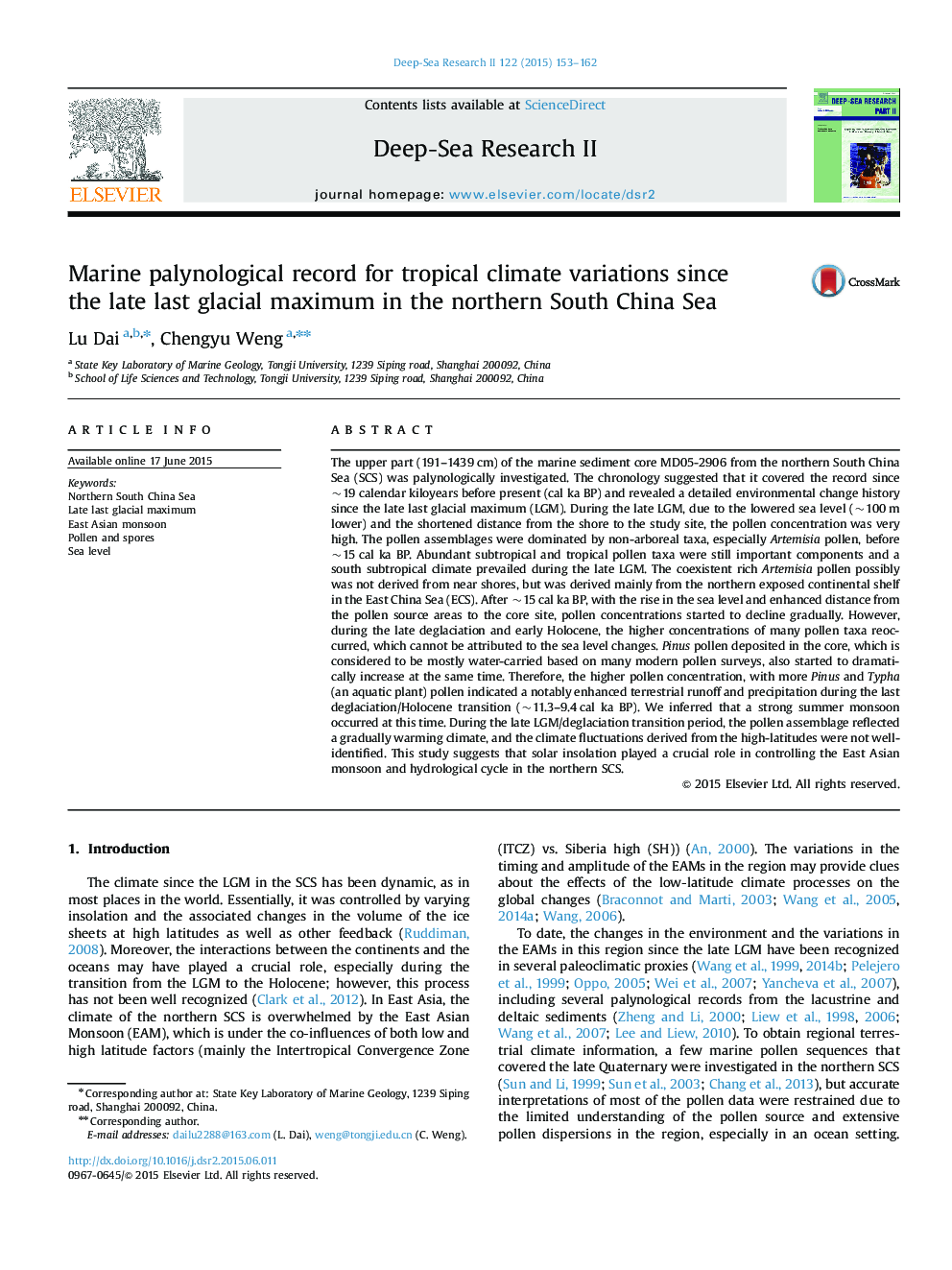| کد مقاله | کد نشریه | سال انتشار | مقاله انگلیسی | نسخه تمام متن |
|---|---|---|---|---|
| 4536168 | 1626419 | 2015 | 10 صفحه PDF | دانلود رایگان |
The upper part (191–1439 cm) of the marine sediment core MD05-2906 from the northern South China Sea (SCS) was palynologically investigated. The chronology suggested that it covered the record since ~19 calendar kiloyears before present (cal ka BP) and revealed a detailed environmental change history since the late last glacial maximum (LGM). During the late LGM, due to the lowered sea level (~100 m lower) and the shortened distance from the shore to the study site, the pollen concentration was very high. The pollen assemblages were dominated by non-arboreal taxa, especially Artemisia pollen, before ~15 cal ka BP. Abundant subtropical and tropical pollen taxa were still important components and a south subtropical climate prevailed during the late LGM. The coexistent rich Artemisia pollen possibly was not derived from near shores, but was derived mainly from the northern exposed continental shelf in the East China Sea (ECS). After ~15 cal ka BP, with the rise in the sea level and enhanced distance from the pollen source areas to the core site, pollen concentrations started to decline gradually. However, during the late deglaciation and early Holocene, the higher concentrations of many pollen taxa reoccurred, which cannot be attributed to the sea level changes. Pinus pollen deposited in the core, which is considered to be mostly water-carried based on many modern pollen surveys, also started to dramatically increase at the same time. Therefore, the higher pollen concentration, with more Pinus and Typha (an aquatic plant) pollen indicated a notably enhanced terrestrial runoff and precipitation during the last deglaciation/Holocene transition (~11.3–9.4 cal ka BP). We inferred that a strong summer monsoon occurred at this time. During the late LGM/deglaciation transition period, the pollen assemblage reflected a gradually warming climate, and the climate fluctuations derived from the high-latitudes were not well-identified. This study suggests that solar insolation played a crucial role in controlling the East Asian monsoon and hydrological cycle in the northern SCS.
Journal: Deep Sea Research Part II: Topical Studies in Oceanography - Volume 122, December 2015, Pages 153–162
